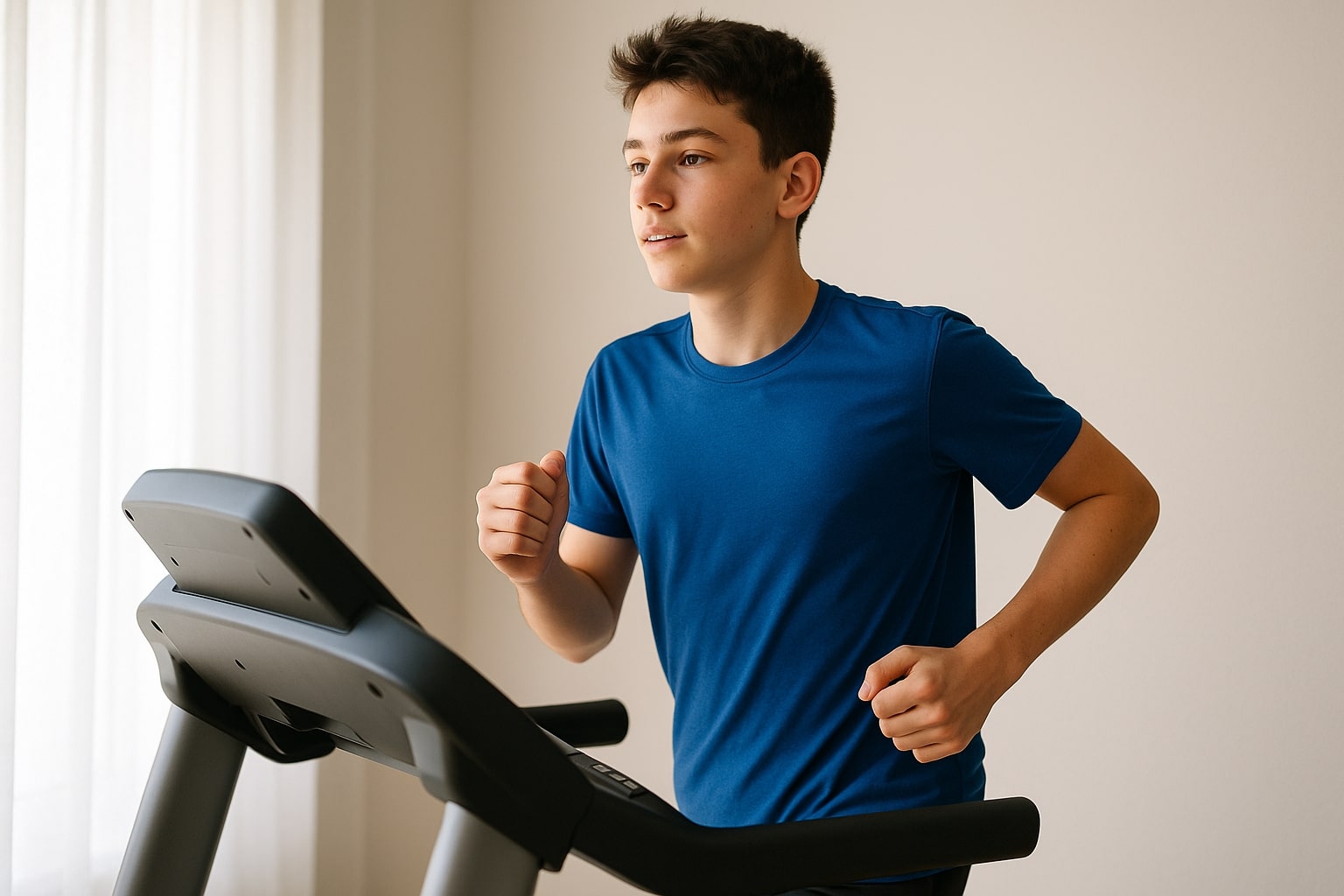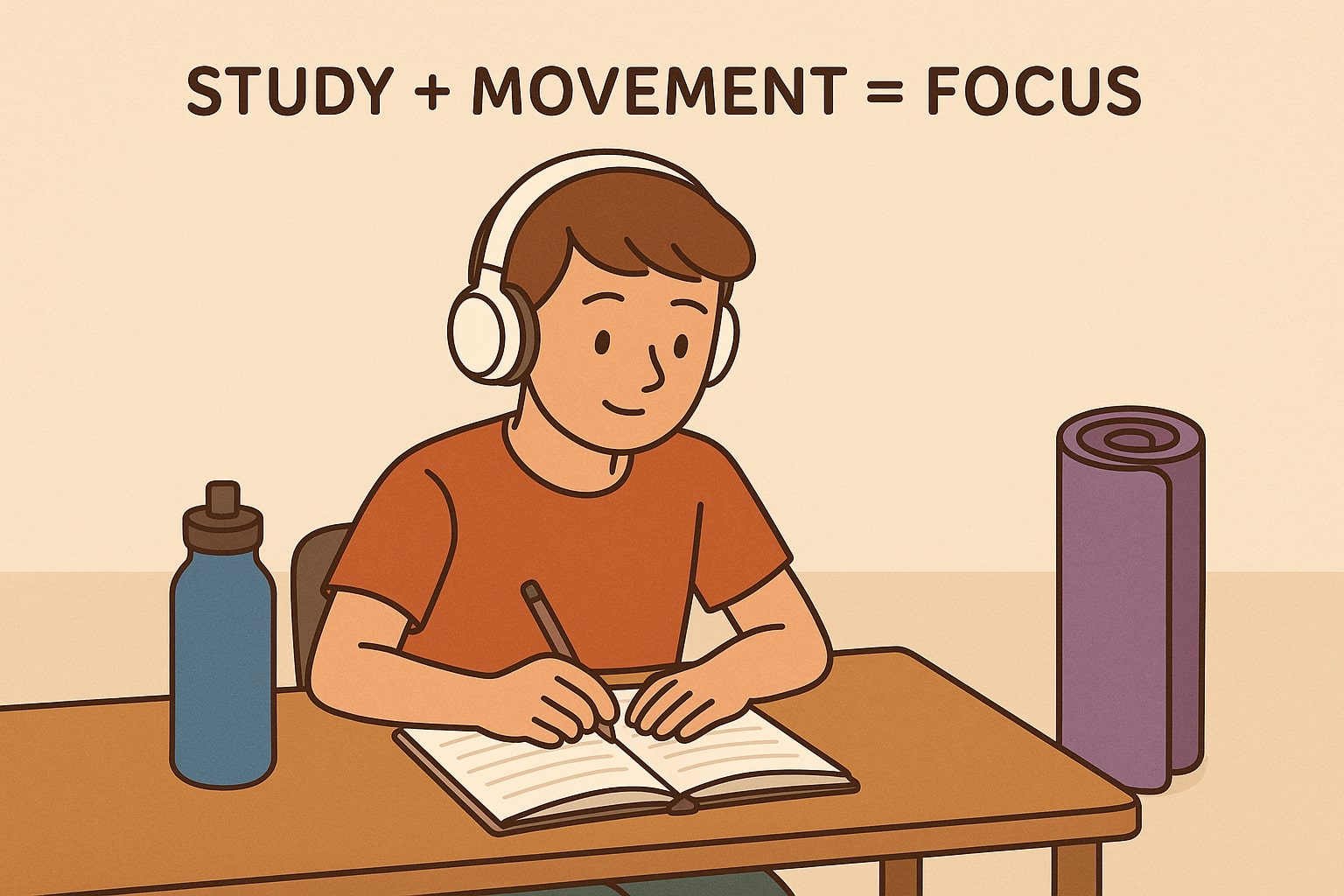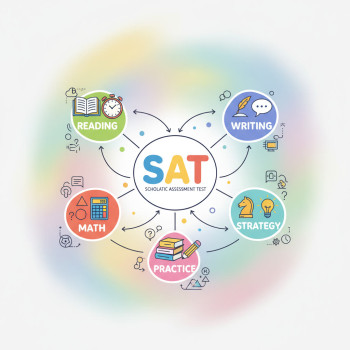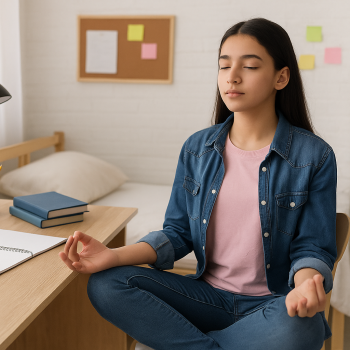Why Exercise Boosts SAT Performance: A Friendly Guide for Students
Imagine waking up on test day with clear thoughts, steady breathing, and the energy to tackle a long Digital SAT session without fading. That image isn’t a fantasy — it’s something you can build with simple, consistent exercise. This post explains, in plain English and practical steps, how moving your body helps your brain perform better on the SAT and what to actually do in the days and hours before the exam.
What we’ll cover
- How exercise affects attention, memory, and stress.
- Simple routines that fit into a busy study schedule.
- How to combine exercise with focused practice for maximum results.
- A sample week and a game plan for test week.
- How Sparkl’s personalized tutoring complements an active prep plan.
The science, in a nutshell: Why moving helps thinking
When students hear “exercise helps the brain,” it can sound vague. Let’s break it down into the parts that matter for a long, concentrated test like the Digital SAT.
1. Better focus and attention span
Short bursts of aerobic activity — like a brisk 20–30 minute walk or a quick run — temporarily increase blood flow and neurotransmitters such as dopamine and norepinephrine. Those chemicals sharpen attention and reduce mind-wandering, which helps when you need to read dense passages or hold multiple steps in mind while solving a math problem.
2. Improved memory and learning consolidation
Exercise, especially when done regularly, supports the growth of new brain connections and enhances consolidation — the process that turns short-term learning into long-term memory. In practice, that means vocabulary, grammar rules, math formulas, and test strategies you review during study sessions are more likely to stick when you pair studying with consistent physical activity.
3. Reduced test anxiety and better stress management
Physical activity reduces the body’s stress hormones and activates calming processes like regulated breathing and parasympathetic recovery. Students who cultivate an exercise habit often report lower pre-test jitters and a greater capacity to recover quickly after a tough question or a timing setback during the exam.
4. Enhanced mental stamina
The SAT demands sustained cognitive effort. Regular exercise improves sleep quality and cardiovascular efficiency, both of which translate into the ability to remain mentally sharp for longer stretches — crucial during a multi-section, timed test.
How this matters specifically for the Digital SAT
The Digital SAT is still an endurance event: multiple sections, lots of reading, and mental juggling. Exercise affects the exact skills you need:
- Reading comprehension: Focus and reduced eye fatigue help you stay engaged with passages.
- Math: Working memory and calm reasoning reduce careless errors and reruns of forgotten steps.
- Timing: Better stamina and reduced distractibility help maintain a steady pace.
Practical routines that actually fit a student schedule
You don’t need to train like an athlete. Consistency and variety beat intensity for most students. The following are evidence-informed, realistic options that pair well with test prep.
Daily micro-workouts (10–20 minutes)
Perfect for busy school days. These boost alertness before study sessions and are easy to maintain:
- Brisk walk or easy jog around the block (15–20 minutes).
- Bodyweight circuit: 3 rounds of 10 squats, 10 push-ups, 20-second plank, 10 glute bridges.
- Jump rope for 5–10 minutes followed by 5 minutes of deep breathing.
Moderate workouts (30–60 minutes, 3–5 times/week)
These build sustained benefits — better sleep, improved mood, and stronger memory consolidation:
- Bike ride or run (30–45 minutes).
- Team sports practice — energy, coordination, and social stress relief.
- Gym session with a mix of cardio and strength training.
Pre-test warm-up (10–15 minutes on test day)
A short, controlled warm-up on test morning can do wonders. Keep it light and focused on calm energy:
- Brisk 10-minute walk or gentle jog to increase alertness.
- 2–3 minutes of deep diaphragmatic breathing to lower heart rate.
- 5 minutes of dynamic stretches (leg swings, arm circles) to loosen muscles without tiring yourself.
How to pair exercise with study for maximum retention
Pairing matters. The timing of exercise relative to study sessions influences whether you boost encoding (learning new material) or consolidation (locking it in).
Exercise before focused study — sharpen encoding
Do a short aerobic routine (10–20 minutes) 10–30 minutes before a focused study block. You’ll often find reading comprehension and problem-solving feel smoother during that immediate window.
Exercise after study — boost consolidation
If you prefer to study first, follow that session with moderate exercise. That post-study window can help consolidate what you just learned into long-term memory.
Alternate days: intensity and recovery
Rotate higher-intensity workouts with light movement or active recovery. Overtraining creates fatigue and cognitive fog; balanced schedules protect mental energy for study and test day.
Sample weekly plan: balancing studying, exercise, and rest
Here’s a sample schedule that mixes deliberate SAT practice with movement and recovery. Adjust times and durations around classes, tutoring sessions, and personal energy patterns.
| Day | Morning | Afternoon/Evening | Focus |
|---|---|---|---|
| Monday | 10–15 min brisk walk + light stretching | 60–90 min focused SAT practice (Reading/Math) | Encoding + focus |
| Tuesday | 30–40 min run or bike | Small review session (30 min) + practice questions | Memory consolidation |
| Wednesday | 10–20 min bodyweight circuit | 1:1 Sparkl tutoring session (targeted skills) | Application + feedback |
| Thursday | Light yoga or stretching (20 min) | Timed practice section (Digital SAT format) | Test-simulation stamina |
| Friday | 30 min team sport / group activity | Review errors + strategy notes (45 min) | Stress relief + strategy |
| Saturday | Rest or gentle walk | Full-length practice test (Digital timing) | Endurance + pacing |
| Sunday | Active recovery (yoga/walk) | Plan upcoming week, light review | Recovery + meta-work |
Note: Integrating targeted tutoring — such as a 1-on-1 Sparkl session mid-week — is especially powerful. You get tailored strategies for the exact problem types that tire you out, and tutors can help optimize how you spend both study and movement time.
Test-week plan: a calm, active approach
In the week leading up to the exam, prioritize light, steady exercise and sleep. Avoid any unfamiliar, draining workouts in the two days before the test.
Three days before the SAT
- Keep workouts moderate (30–40 minutes). Focus on sleep and nutrition.
- Do light review: targeted practice sets rather than full-length tests.
One day before the SAT
- Do a short walk or gentle yoga (20–30 minutes) to settle nerves.
- Pack your testing bag, review key formulas or grammar rules for 20–30 minutes, then stop — spending the evening relaxing is more valuable than last-minute cramming.
Test morning
- 30–60 minutes before leaving, do a 10–15 minute brisk walk and 3–5 minutes of deep breaths.
- Eat a balanced breakfast with protein and complex carbs (e.g., eggs and oatmeal) and hydrate.
Real-world examples: students who used movement to improve scores
Stories are helpful because they show how this works in practice:
- Maria, a junior, combined 20-minute walks before every evening study block. Her reading accuracy improved because she could stay engaged with longer passages without zoning out.
- Devin scheduled 30-minute runs three times a week and noticed better sleep and fewer careless math errors on timed sections.
- Jamal used quick breathing and stretching between practice sections to reset focus and reduce the overwhelm he felt during full-length tests.
These changes aren’t magic — they are small habits that create consistent benefits. Add them to focused practice, and the improvements compound.
Combining exercise with personalized tutoring
Exercise sets the stage; tutoring sharpens the content and strategy. Personalized tutoring — such as Sparkl’s 1-on-1 guidance — can help in several specific ways:
- Identify mental fatigue patterns: Tutors can map which section types tire you most and recommend exercise timing to counteract it.
- Create tailored study plans that respect your energy cycles, pairing intense practice with light movement rather than long, glued-to-a-desk sessions.
- Provide expert feedback so your practice is efficient — you’ll get more cognitive return for the study time you have, especially on days you balance workouts and study.
When Sparkl’s tutors combine targeted content work with suggestions for movement and recovery, students often report improved concentration during both practice and the real test.
Quick strategies you can implement today
If you’re ready to act now, try these immediate steps:
- Add a 15-minute walk before your next study session this afternoon.
- Replace one passive study hour with 45 minutes of active study + 15 minutes of movement.
- Schedule three 30-minute moderate workouts this week and notice sleep quality and daytime focus.
- Before your next timed practice, do a 10-minute warm-up: walk, breathing, and light stretching.

Common questions students ask
Won’t exercise tire me out before an important study session?
Short, moderate exercise energizes most people and sharpens attention. Avoid very intense, exhaustive workouts right before a heavy study block; instead, use light-to-moderate movement to prime your brain.
How much exercise is enough?
Twenty to forty minutes of moderate activity most days of the week delivers clear cognitive benefits. Even shorter, consistent bursts (10–20 minutes) have meaningful effects on immediate focus.
Should I study immediately after exercising?
Both timing strategies work: short exercise before study improves immediate focus; exercise after study helps memory consolidation. Try both and see which fits your energy and schedule.
Measuring progress: what to track and why
Keep it simple. Track these metrics for 2–4 weeks and watch for changes:
- Sleep quality and duration.
- Number of study distractions or times you re-read passages.
- Score trends on practice problems or timed sections.
- Perceived stress before practice and tests.
Small numerical wins (e.g., fewer careless errors over three timed math sections) are more actionable than vague impressions. If you’re working with a Sparkl tutor, share these metrics — your tutor can adjust pacing, identify fatigue patterns in the data, and help refine the plan.
Things to avoid
- Doing very intense or unfamiliar workouts within 48 hours of the test — they can cause soreness or unexpected fatigue.
- Relying on exercise as the only strategy — movement amplifies the benefits of focused, deliberate practice; it doesn’t replace it.
- Neglecting sleep — exercise helps sleep, but it can’t make up for chronic late nights.
Final game plan: a concise checklist for test success
Use this checklist in the month before your Digital SAT:
- Establish 3–5 weekly movement sessions (10–45 minutes each) mixing aerobic and strength or flexibility work.
- Pair short exercise with at least one focused study block per day.
- Schedule light activity the day before the test and a short warm-up on test morning.
- Track sleep, practice scores, and stress; share patterns with your tutor if you have one.
- Use personalized tutoring when possible — a 1-on-1 Sparkl session can align study plans with your energy and cognitive patterns for faster improvement.
Closing thoughts: small moves, big returns
Preparing for the SAT can feel like a race to cram the most content into limited time. But the best approach isn’t always more hours — it’s smarter hours. Exercise is one of the most efficient, low-cost ways to upgrade how you study and how you perform on test day. By improving focus, memory, stress control, and stamina, consistent movement helps your hard work pay off.
If you want help building a personalized study-and-exercise plan, consider pairing targeted practice with expert guidance; tutors (like those at Sparkl) can tailor content work to your strengths and energy cycles so each study minute counts. Move a little every day, study deliberately, and you’ll be surprised by how much clearer and more confident you feel when you sit down for the Digital SAT.
Good luck — and don’t forget: the best test-prep strategy is the one you can keep doing. Lace up, breathe, and get ready to think better.



















No Comments
Leave a comment Cancel